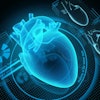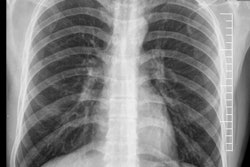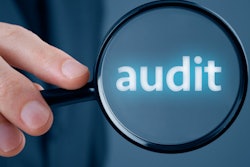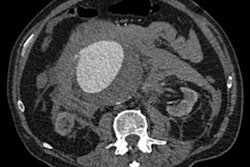
While radiologists are of course best-suited to report on imaging studies, they may not always be immediately available due to staff shortages. The U.K. Royal College of Radiologists (RCR) has released new guidelines on how nonradiologists can interpret these examinations.
"This publication defines standards and best practices for radiologists, regulatory authorities, hospital managers, and individual doctors regarding medically qualified nonradiologists who wish to interpret imaging investigations," stated RCR Vice President of Clinical Radiology Dr. Richard FitzGerald in a foreword to the new standards.
Communication on this topic with other disciplines, professional organizations, hospital trusts, regulatory authorities, and health departments in all four U.K. countries "strongly suggest that there is a lack of clarity that needs to be addressed," the RCR noted.
As a result, the RCR now recommends seven standards for the reporting of imaging studies by nonradiologist medically qualified practitioners:
 Dr. Richard FitzGerald of the RCR.
Dr. Richard FitzGerald of the RCR.- Every imaging investigation needs to be reported within an agreed time by an individual appropriately trained to interpret that particular investigation.
- All imaging investigations need to be accompanied by a formal, permanently recorded report that covers the whole of the examination.
- Commissioners, providers of healthcare, and hospital trusts need to provide sufficient resources, in terms of radiologists, information technology (IT), and infrastructure, to achieve these standards.
- Where interpretation of radiological investigations is delegated to nonradiologist medically qualified practitioners, hospitals and healthcare providers are jointly responsible for ensuring the expertise of the practitioners and for obtaining their agreement to provide a record of the result of each investigation.
- All practitioners who interpret imaging investigations should include their name, professional status, grade, position, and medical registration number when reporting an imaging investigation.
- There should be a regular audit (at least once a year) of both unreported imaging investigations and the time it takes for a report to be issued.
- Healthcare organizations should have mechanisms in place to support interim reporting of images by nonradiologist doctors in training and other nonradiologist consultants.
Noting the extensive training required to be a radiologist, the RCR stated that for the majority of imaging examinations, reporting is best carried out by radiologists, or where appropriate, by delegation to role-extending practitioners working in teams with radiologists.
"Other professional groups do not share this depth and breadth of experience, training, and ongoing support in clinical imaging," the RCR wrote.
As the report forms the permanent record of the interpretation of the imaging study on which patient management decisions are made, it needs to be available as part of the patient's permanent medical record.
"It is best practice that this report be displayed alongside the relevant image on a [PACS] rather than being stored or recorded separately elsewhere," the RCR wrote. These reports should also follow the RCR's previously published standards for the reporting and interpretation of imaging investigations, the RCR added.
The RCR also noted that certain imaging investigations will cover body systems or parts that fall outside of an individual reporter's expertise.
"Where the reporter is unable to report the whole of the examination, it will need to be dual-reported with an appropriately trained medical practitioner, who would usually be a radiologist," the RCR wrote.
Shortage of radiologists
While radiology departments in the U.K. should strive to achieve these new standards, the RCR acknowledgef that there are insufficient numbers of radiologists in the U.K. to report all the radiological imaging studies being produced in the country.
"As a result of this workforce shortage, these standards cannot currently be achieved in many healthcare organizations," the RCR wrote. "Despite this, the RCR considers that healthcare organizations should provide appropriate resources to ensure timely reporting or reporting supervision of all imaging investigations by radiologists."
The Ionizing Radiation (Medical Exposure) 2000 regulations provide for imaging interpretation by medically qualified nonradiologists relating to the field of expertise, as long as their employer has determined that their training has included relevant image interpretation and that they agree to make a written record of every investigation, according to the RCR. These practitioners also need to work in an environment where they can access high-quality image display monitors that allow accurate reporting, the RCR noted.
"The responsibility for ensuring such individuals are sufficiently expert to interpret imaging investigations and agree to record the results of their interpretation rests with the hospital's management and radiology leadership," the RCR wrote. "However, ultimately the medical director remains responsible for the delegation of radiology services."
Because the PACS is not linked to the RIS outside of radiology departments at many U.K. healthcare organizations, it may not be possible for medically qualified nonradiologists to produce a formal, permanently recorded report. It's acceptable in these situations to record results in clinical notes or letters, the RCR stated. The college also noted that electronic patient record software could be an alternative to RIS/PACS reporting.
"Compliance with the standards outlined in this document should be audited as experience shows that if there is no record of the imaging interpretation, it may appear that the imaging investigation has not been viewed," the RCR wrote. "When such imaging investigations contain significant findings, there may be very expensive and damaging medicolegal and patient care consequences."
Regular audits also need to be performed as an element of a patient safety program within all radiology departments, according to the RCR.
"Such audit will determine whose responsibility it was to record a report for each unreported imaging investigation and institute appropriate action to minimize the number of unreported examinations," the RCR wrote. "Similarly, delays in reporting need to be remedied."
Interim reporting
Mechanisms should also be in place to support the interim reporting by nonradiologists, according to the RCR. Because imaging exams are often initially interpreted by nonradiologist doctors in training or by nonradiologist consultants whose expertise does not lie specifically in a particular imaging study, there will be occasions when nonradiologists will provide interim reports, and a definitive radiologist report may be issued later, the RCR noted.
Employing healthcare organizations should agree whether and to what level trainees and nonradiology consultants can make diagnoses in emergency situations based on imaging, according to the RCR. These diagnoses, however, should not constitute the final or authorized report, but rather a "working impression" of the examination. A suitably qualified individual -- usually a qualified radiologist or appropriately qualified and trained nonradiologist -- should then subsequently review the impression and provide a formal report, according to the RCR.
Healthcare organizations have the responsibility "to make sure there are enough consultant radiologists to provide a timely expert report and for radiology departments to make sure that this can be delivered at all appropriate times," the RCR noted.
The new RCR standards mark the revision of its previous standards and recommendations for the reporting and interpretation of imaging investigations by nonradiologist medically qualified practitioners and teleradiologists. Published in 2011, that document has now been withdrawn, according to the RCR. The new standards document can be downloaded for free on the RCR website.



















